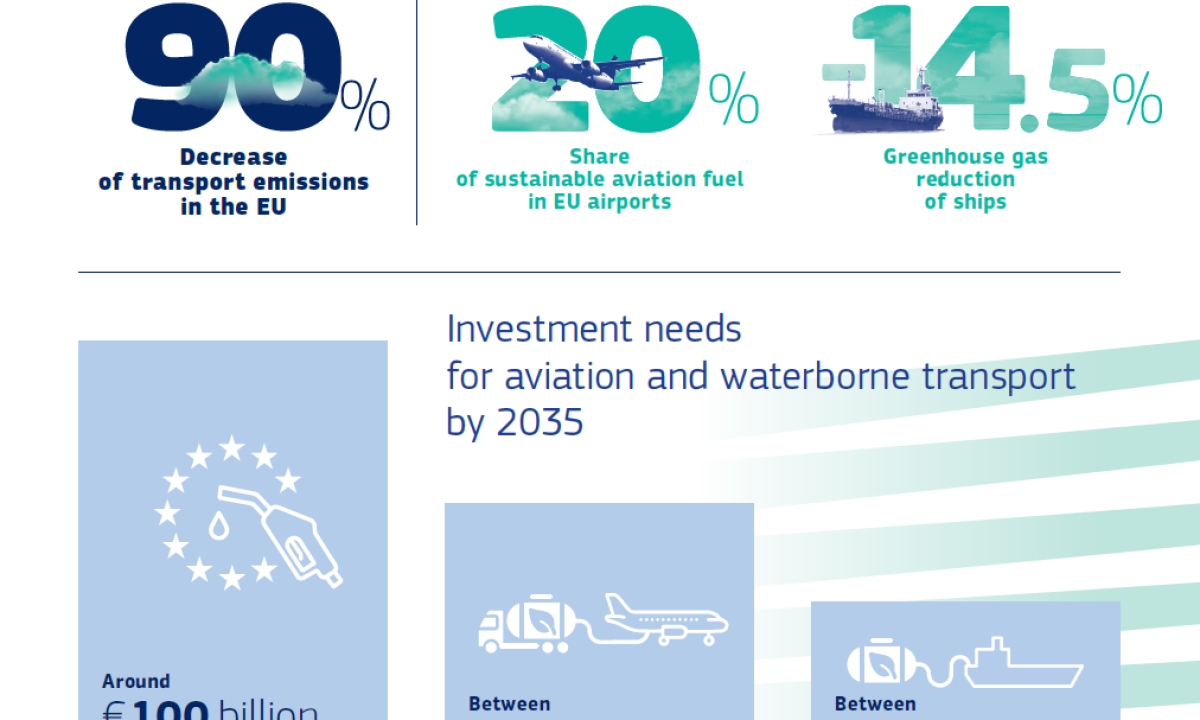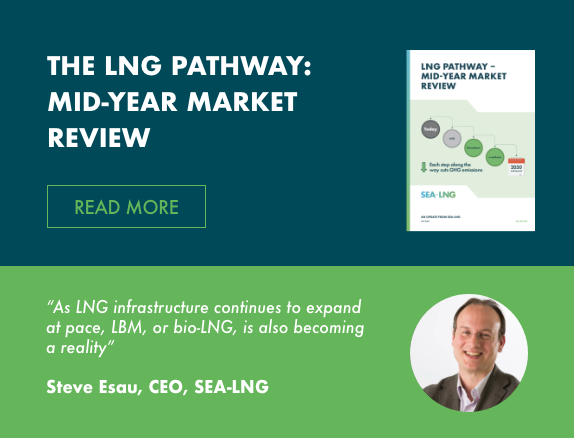26th September 2019
ADDENDUM: LIFE CYCLE GHG EMISSIONS STUDY ON THE USE OF LNG AS MARINE FUEL

Introduction
SEA-LNG and SGMF’s study on the greenhouse gas (GHG) emissions associated with the use of LNG as a marine fuel, published in April of this year, has now been downloaded by more than 1,000 different individuals and organisations. The report has been well received and we have been keen to encourage discussion of the analysis.
We have had feedback from a number of commentators which we would like to address. This feedback falls into three main areas:
- how our study allocated GHG emissions to the production of traditional marine fuels;
- our assumptions on engine efficiencies; and
- how we have handled methane slip.
Therefore, we asked the independent consultants thinkstep, who originally undertook the analysis, to review these areas to provide further clarification and their full response can be accessed here.
A reminder
Before moving on to discuss these issues, a few words on the original study. It has been widely recognised as the most comprehensive analysis undertaken to date on the lifecycle GHG emissions of LNG as a marine fuel compared with current and post-2020 conventional marine fuels. The analysis was based on the latest primary data from the main marine engine manufacturers, namely Caterpillar MaK, Caterpillar Solar Turbines, GE Aviation, MAN Energy Solutions, MTU Friedrichshafen, Winterthur Gas & Diesel and Wärtsilä. On the fuel supply chains, data from internationally recognised lifecycle databases was supplemented with information from ExxonMobil, Shell and Total. The study assessed the supply and use of LNG as a marine fuel according to ISO standards. Finally, to ensure objectivity, it was peer-reviewed by leading academics from key institutions in France, Germany, Japan and the USA.
Traditional marine fuels and GHG emissions
One commentator has suggested that little or no GHG emissions should be associated with the production of HFO at refineries (i.e. HFO is a ‘free product’ from the refining process) thereby reducing the relative emissions of HFO compared with LNG on a Well-to-Wake basis. This is a highly unusual assumption and not consistent with the approach taken by most lifecycle analysis practitioners. So long as HFO is considered a product with a positive market value, HFO should be accountable for a certain percentage of refinery emissions and should not be considered as “free” of GHG emissions.
Engine efficiencies
The data and assumptions used by thinkstep relating to engine efficiencies have been questioned. There is a suggestion that the thermal efficiency numbers used for LNG-fuelled engines are too high compared with diesel-fuelled engines, resulting in more favourable GHG emissions results for LNG. It is important to note that the thinkstep analysis used data, supplied by OEMs, for engines that are being sold now, whereas previous studies have analysed older engine technologies. Additionally, in contrast to other analyses, thinkstep also took into account pilot fuel usage in the dual fuel LNG engines and urea use in NOX abatement.
Methane emissions
Engine load factors and the GHG emissions at different loading levels has also been debated. While engine loading varies by vessel type, deployment, liner versus tramp itineraries, weather and a myriad of other factors, vessel owners and operators carefully specify their engine performance to avoid excess engine capacity i.e. to minimize initial capital investment and fuel consumption.
Every operator looks for the most efficient operation of their propulsion systems given safety considerations. Furthermore, under the Energy Efficiency Design Index (EEDI) principle, where ships are to become ever more efficient, penalties are incurred for excessive propulsion capacity. The minimum fuel consumption for 2-stroke slow speed fuel oil engines occurs at 60-65% load, while for LNG engines this is 65-80%. Methane slip in LNG engines are lowest at high load points. So, if it is (incorrectly) assumed that LNG engines operate at the same load factor as oil-based engines, then methane emissions would be higher.
Finally, to suggest that the results from specific regional studies for one class of marine engines, such as 4-stroke engines, can be extrapolated to the different, (i.e. 2-stroke), engine technologies operating in global shipping trades is incorrect and misleading. As detailed in the thinkstep study, 2-stroke high pressure LNG dual fuel engines have significantly lower levels of methane slip than the equivalent 4-stroke low pressure LNG dual fuel engines. Today, more than 70% of marine fuel is burned by vessels operating in the deep-sea shipping space using 2-stroke engines and this is where the majority of GHGs are emitted.
In conclusion
As more owners shift to clean, sulphur-free LNG fuel we will see the added benefits of reduced emissions of NOx and especially Particulate Matter on global air quality and we will be better able to quantify the GHG benefits through actual operational data and experience. As this process continues we are more convinced than ever of the robustness of the life-cycle GHG emissions study that SEA-LNG and SGMF commissioned.
To read more from thinkstep on the technical approach to the addendum, please view the PDF using the button below:



